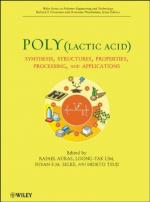|
This section contains 1,155 words (approx. 4 pages at 300 words per page) |

|
Overview
Lactic acid (LAK-tik AS-id) is a colorless, odorless, syrupy liquid that occurs in two isomeric forms, D-lactic acid and L-lactic acid. Isomers are two or more forms of a chemical compound with the same molecular formula, but different structural formulas and different chemical and physical properties. The D form is produced during metabolic reactions that take place in muscle tissue, while the L form is produced by yeast cells. The synthetic production of lactic acid results in a product consisting of equal amounts of the D and L forms, a mixture known as a racemic mixture.
Key Facts
Other Names:
2-hydroxypropanoic acid; ±-hydroxypropanoic acid; milk acid
Formula:
CH3CHOHCOOH
Elements:
Carbon, hydrogen, oxygen
Compound Type:
Carboxylic acid (organic)
State:
Liquid
Molecular Weight:
90.08 g/mol
Melting Point:
16.8°C (62.2°F)
Boiling Point:
Not applicable; decomposes upon heating
Solubility:
Very soluble in water and ethanol; slightly soluble in...
|
This section contains 1,155 words (approx. 4 pages at 300 words per page) |

|


